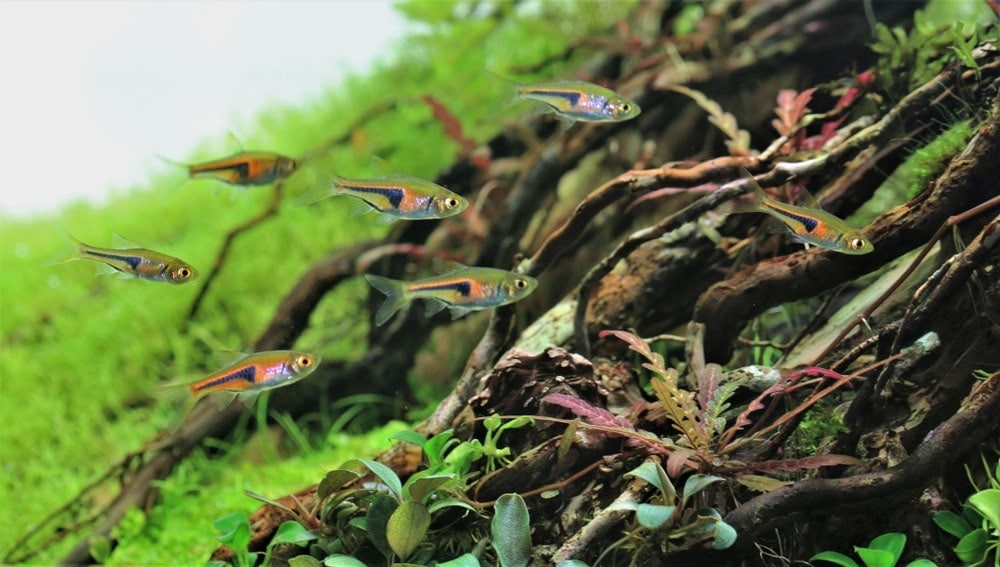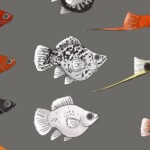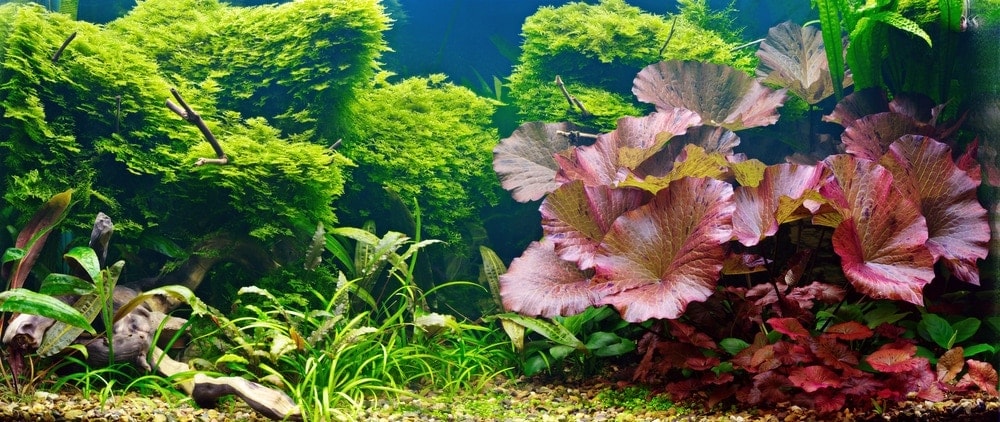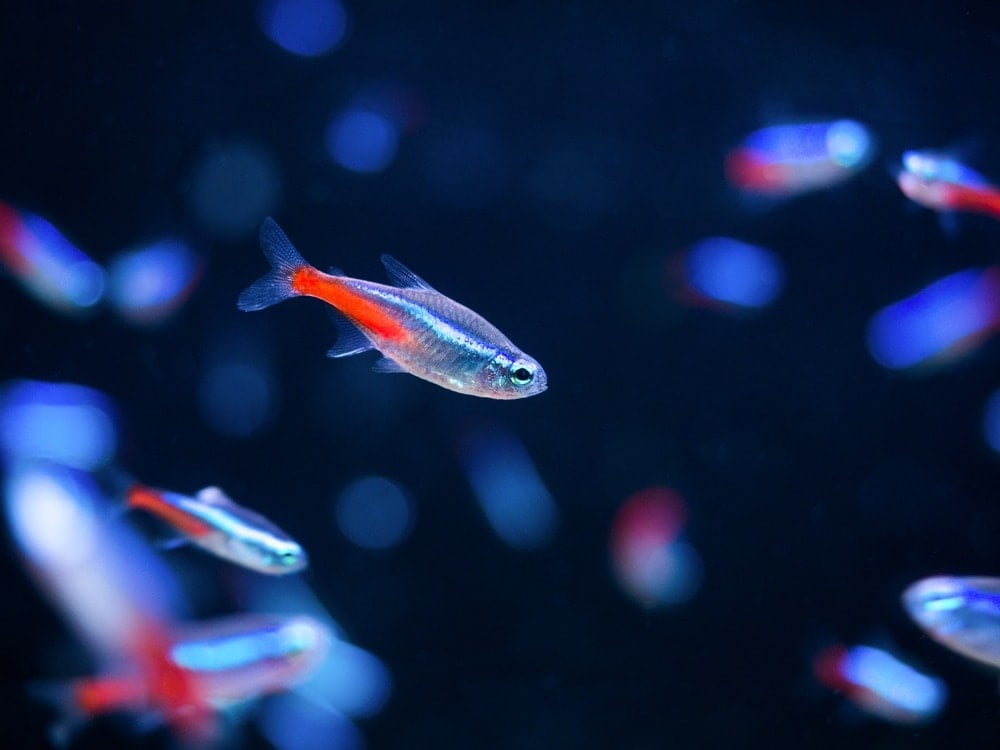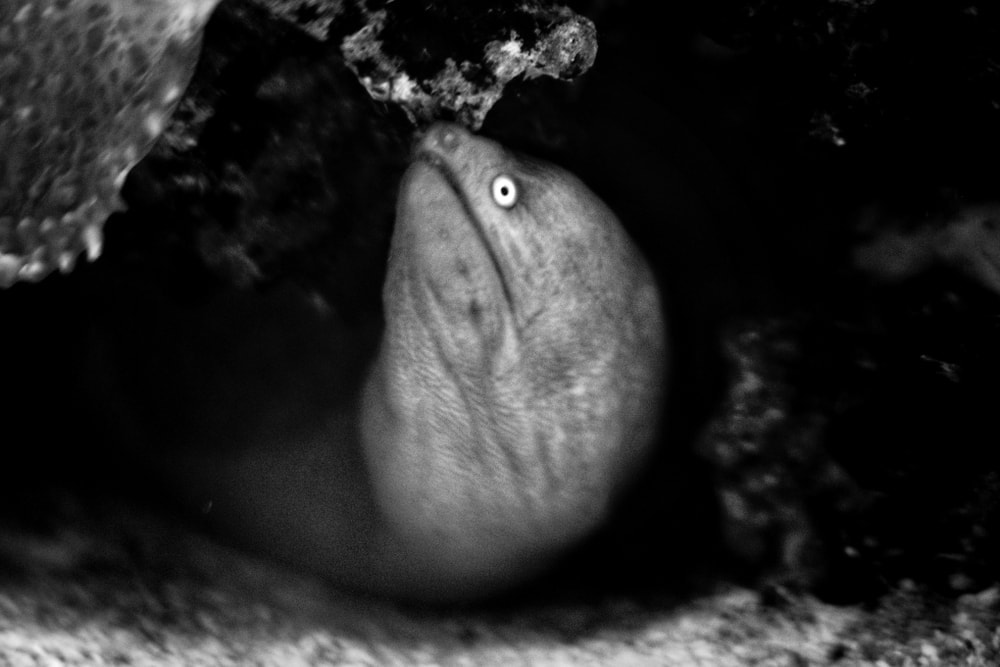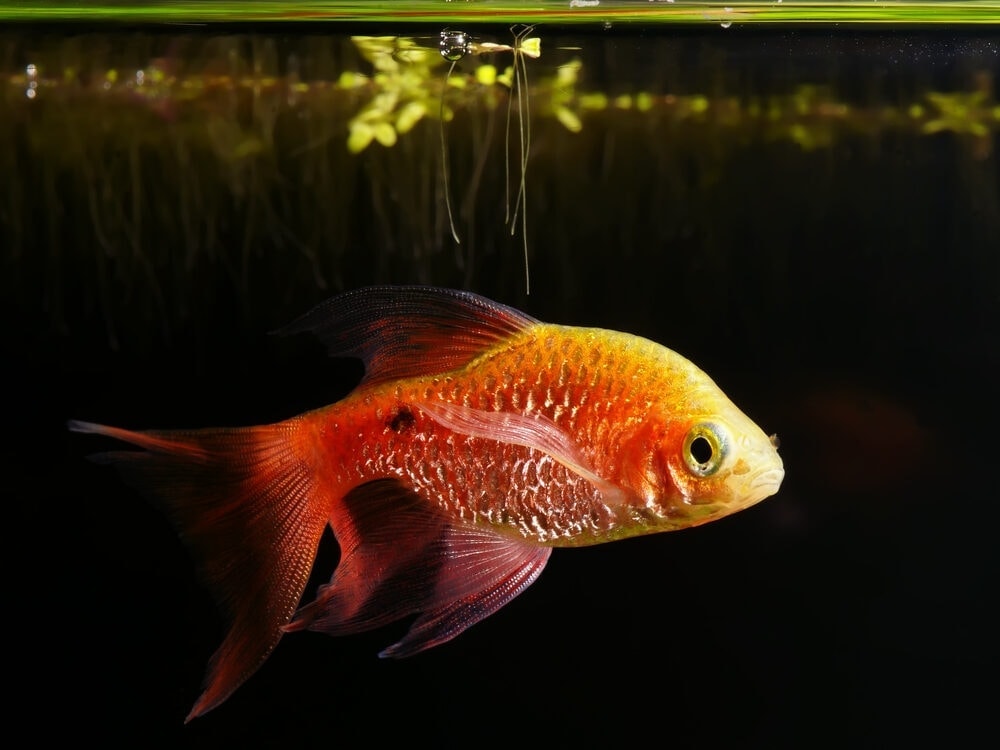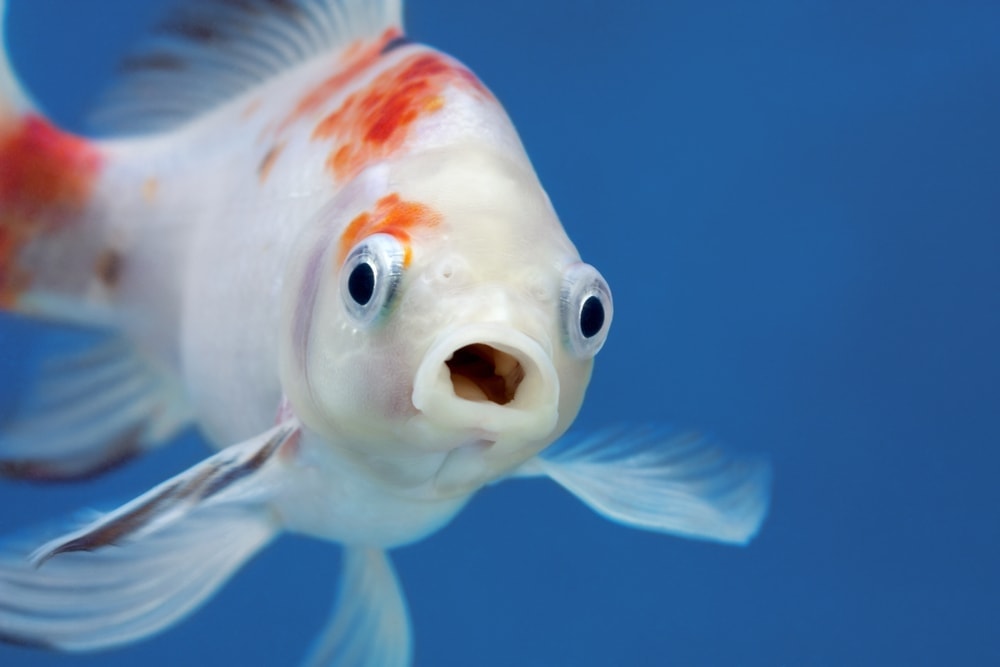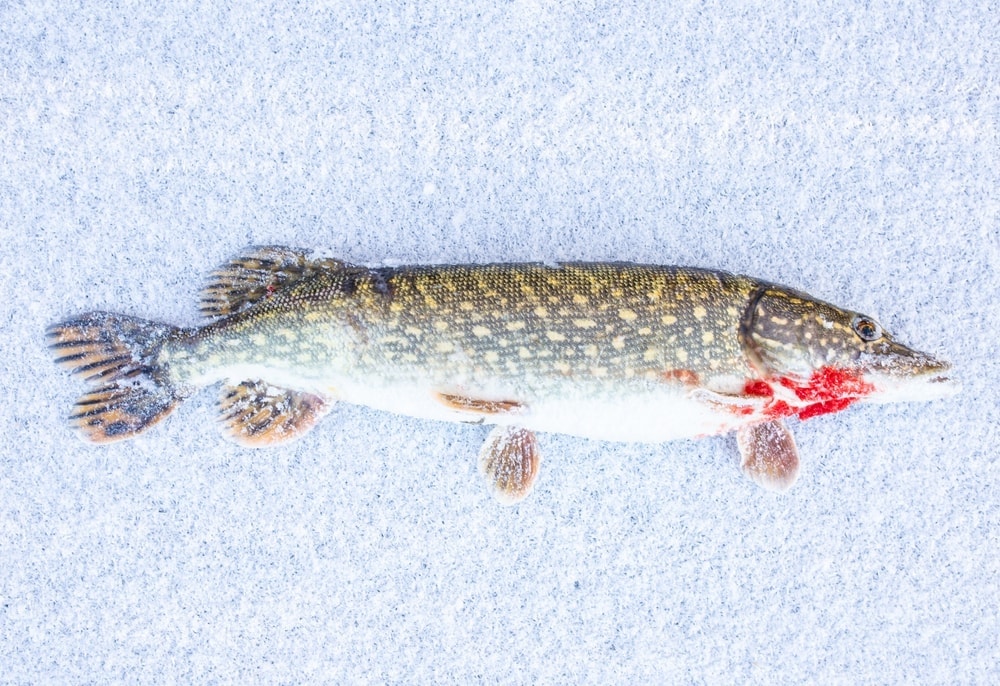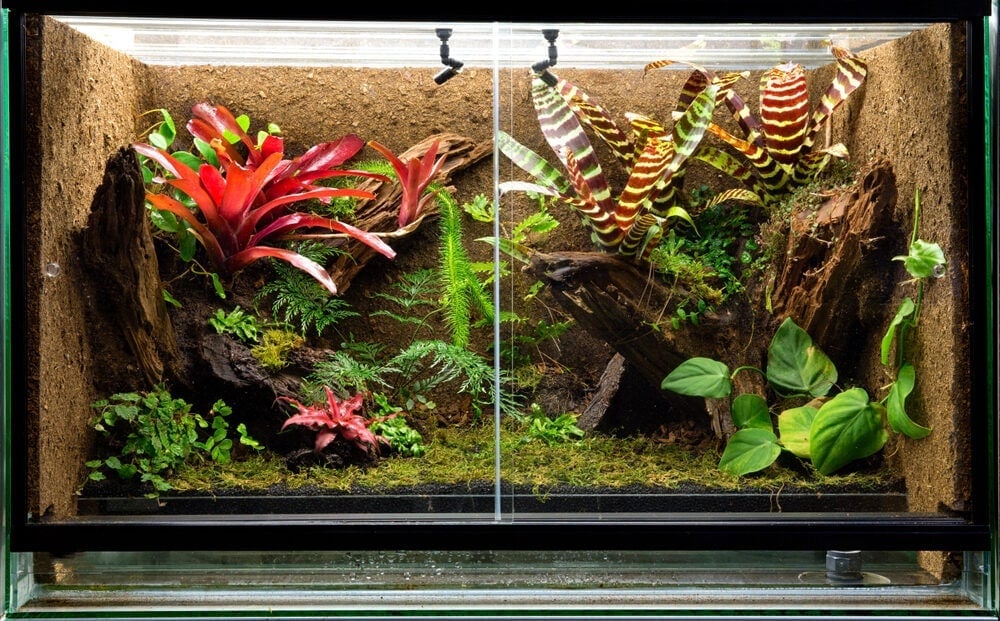The Rasbora is a school type of fish with a docile temperament, and normally like to dominate the middle to the high area of the aquarium.
They are social and compatible with different types of fishes but also timid and will take off when they see you approach the aquarium, some will try to dig into the substrate to hide and others might even jump out of the water.
Rasboras hail from the Cyprinidae family; they are a freshwater fish and have up to 84 known species. Their attractive color will enhance your fish or plant aquarium, but if you plan on keeping them with other fish ensure that they are of the same size and temperament so that they don’t end up being an expensive snack.
Taking care of them is not as hard for both beginners and professionals, and you can have both types in one aquarium. They don’t grow very big except for the harlequin that tends to get slightly bigger than the Espei Rasbora (Lambchop).
Characteristics of the Harlequin
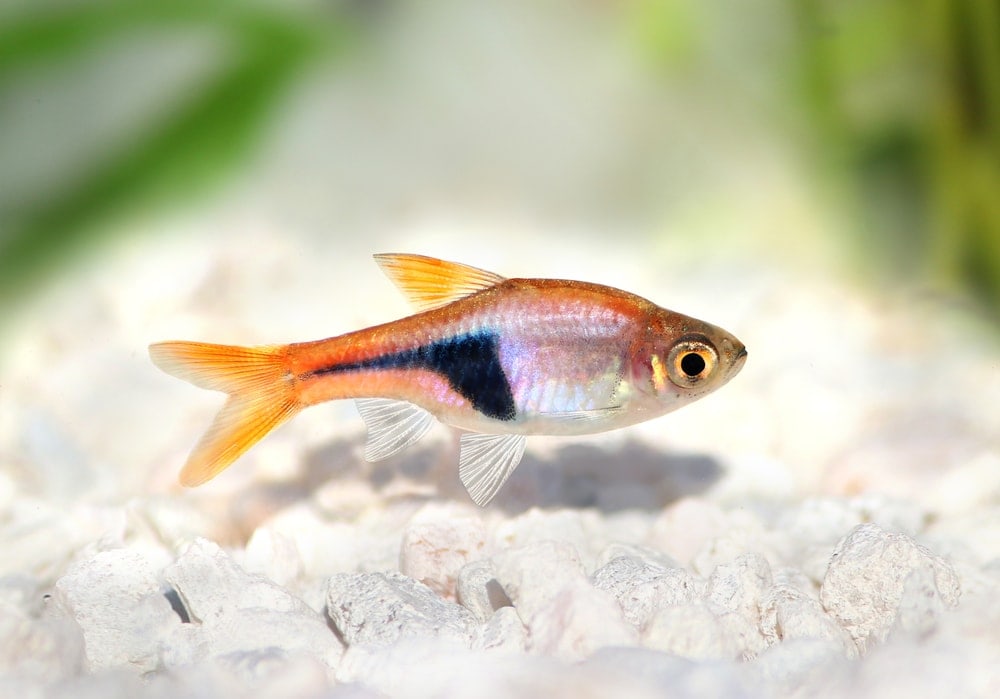
The Rasbora Hets also known as the Harlequin Rasboras, originate from Southern Thailand, Malaysia, Singapore, and Sumatra. To know the differences between the Hets and the Espei just look at the color markings. The body features a reddish-copper color with a black wedge at the bottom half of its full length, a close look at the dorsal fin, you will notice the beginning of the markings, which goes up to the caudal fin.
Harlequins love to move in groups and you will notice that they are happy and content. And that is why when you don’t keep them in groups they tend to get stressed. They don’t go past 2 inches of growth; differentiating the male from the female is not an easy task but you can tell it’s a male if you notice that the black patch is a little bigger.
Characteristics of the Espei Rasboras
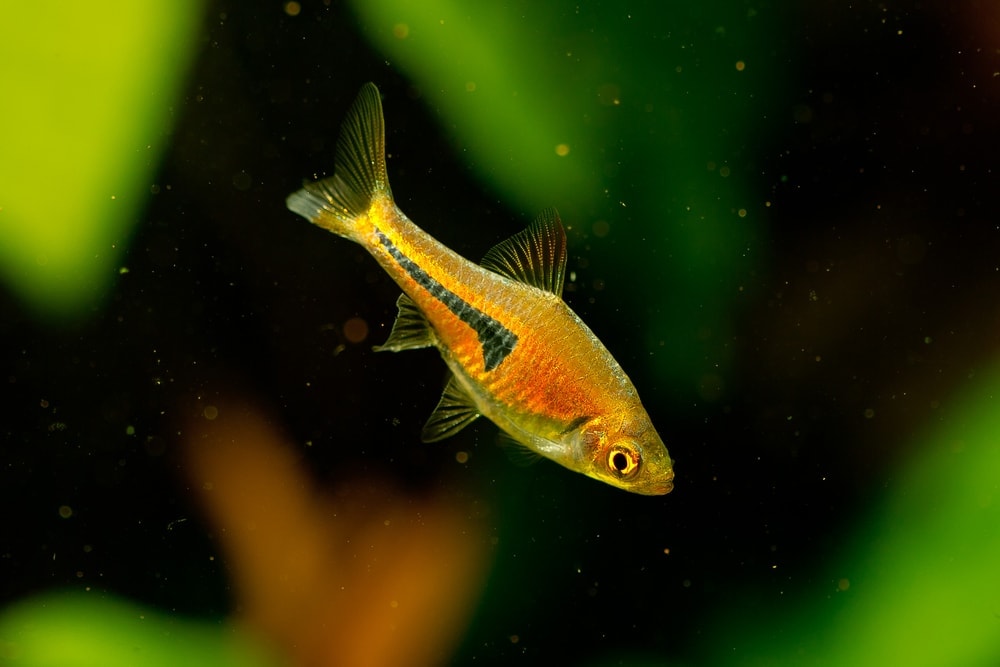
Some species of the Espei Rasboras have been found in the Southwest of Thailand and others in the SouthEast. They, therefore, don’t have the same colors and you will find that different Rasbora’s from different localities tend to have their own unique colors.
Espei Rasboras thrive in gently flowing forests streams and will also be found in areas where there are many submerged aquatic plants. These areas of the streams are characteristic of soft, neutral and weakly acidic water.
The male Espei comes out as more colorful than the mature females that seem to have a large body structure and a rounder belly. Well if you are trying to figure out which one is the male or female and the above method doesn’t suffice, check on the black wedge mark. For the females, it will seem round but for the males, it is well defined and has a sharp outlook.
Feeding of the Rasboras
Feeding of the harlequin is not as hard, for one they do enjoy live foods such as the small insects, worms and the zooplankton. Dry foods include the color and tropical flakes, shrimp pellets and tropical granules among others. And If you have the small ones you can just crash dried foods so that they can fit in their small mouths.
Do not fill the tank with a lot of food because the water will turn cloudy and the leftover foods might lead to the development of bacteria. Unlike the shrimps, Rasboras will eat for at least three minutes and be done with that chapter, so you have to ensure that the food fed to them can all be consumed at one time.
Tank requirements
For the first-timers in the aquarium industry, you might want to ensure that your Rasbora aquarium has a lid to prevent them from jumping out. For the floor of the tank use a dark substrate and the filter should simulate their natural environment of a slow-moving stream. They do love a well-planted aquarium but don’t use plastic plants.
What’s more, is that the plants would be best suited at the back of the aquarium because as much as the Rasboras love dense vegetation they also love their space. Remember they live in a school, so leave enough space for swimming at the front part of the aquarium.
When incorporating plants into the aquarium invest in those that grow tall, so that they can also help you regulate the light that enters the aquarium, such as the Vallisneria, and the amazon sword.
Water requirements
Keeping and breeding Rasboras will attract different care techniques and tank requirements; when breeding you will need soft and acidic water, but when keeping you will need the water to be soft but not acidic. If you are keeping both the Hets and the Espei then the water PH can be maintained at 7.2, and the water temperature at 76 degrees Fahrenheit.
Water should be changed to maintain freshness at least twice a month or weekly. The Rasboras don’t require too much lighting but you can provide one nonetheless only that you have to subdue it with the dense vegetation. If at one time you fail to see them shoaling around then know that they are running away from the bright lights and at times from the aggressive fish.
Compatibility
So we don’t want to include big aggressive fish in the aquarium that will terrorize the Rasboras, you can, therefore, get the chocolate gouramis, the small tetras, the celestial danios, guppies, croaking and the pentazona barbs. Also, try to find compatible bottom dwellers because this is the area that is rarely occupied by the Rasbora.
Breeding
Some species of the Rasboras turn out to be the most careless egg layers, because they don’t really care about the eggs that they lay and you will find them scattered in the aquarium in between plants. The adult mature fish will, however, produce their young ones without any assistance. The lamb chop and the harlequin type of Rasbora, on the other hand, do lay their eggs on the underside of leaves.
